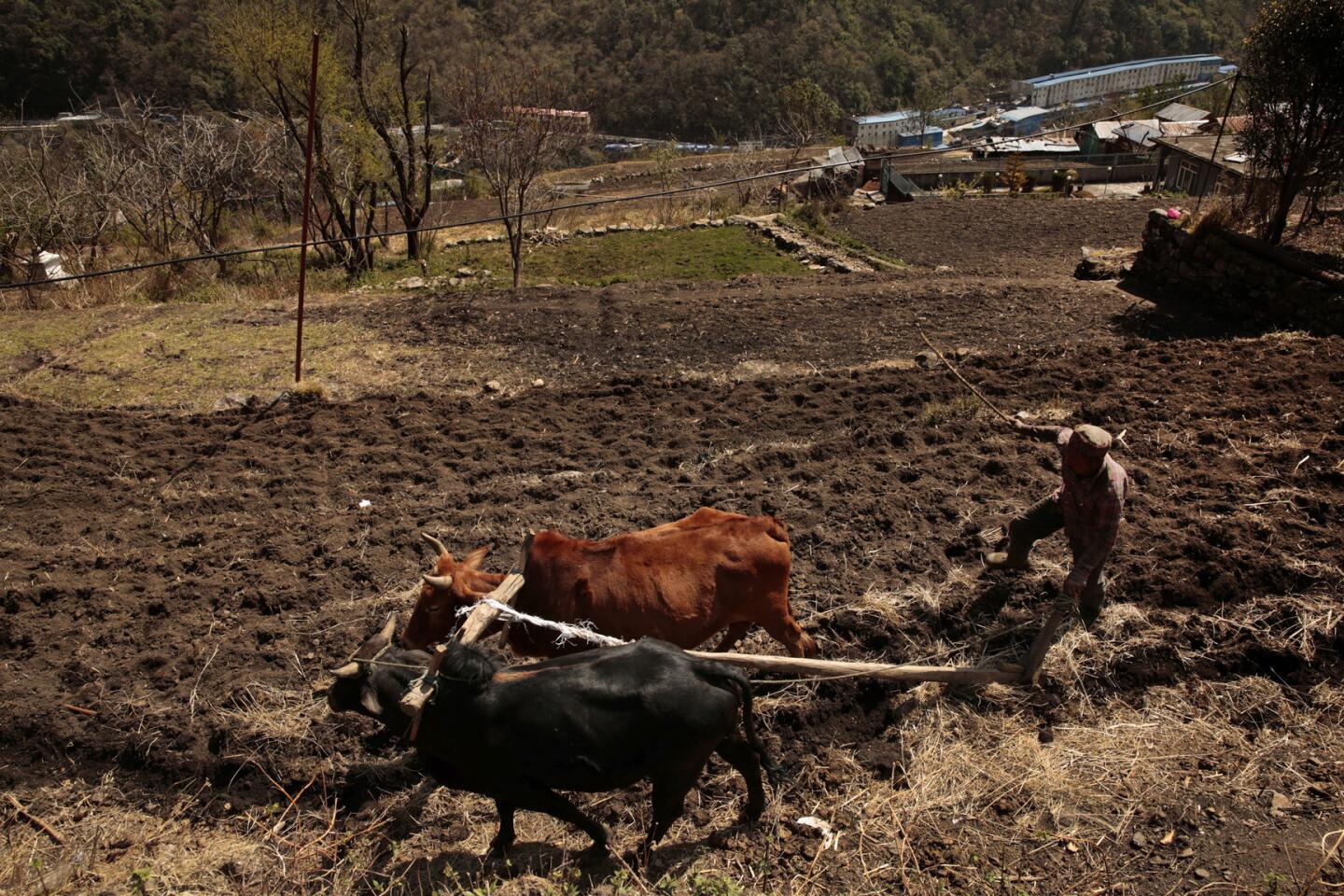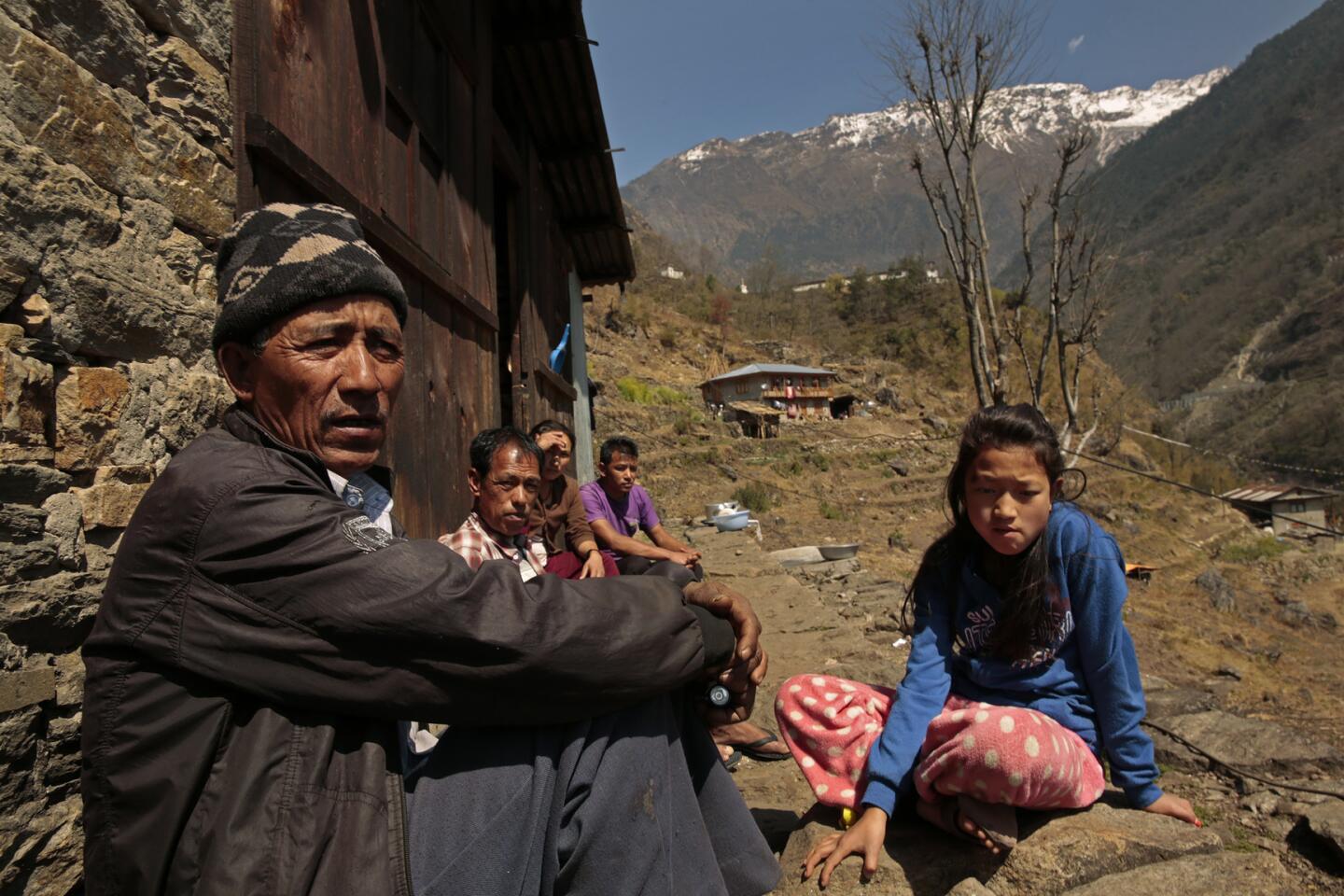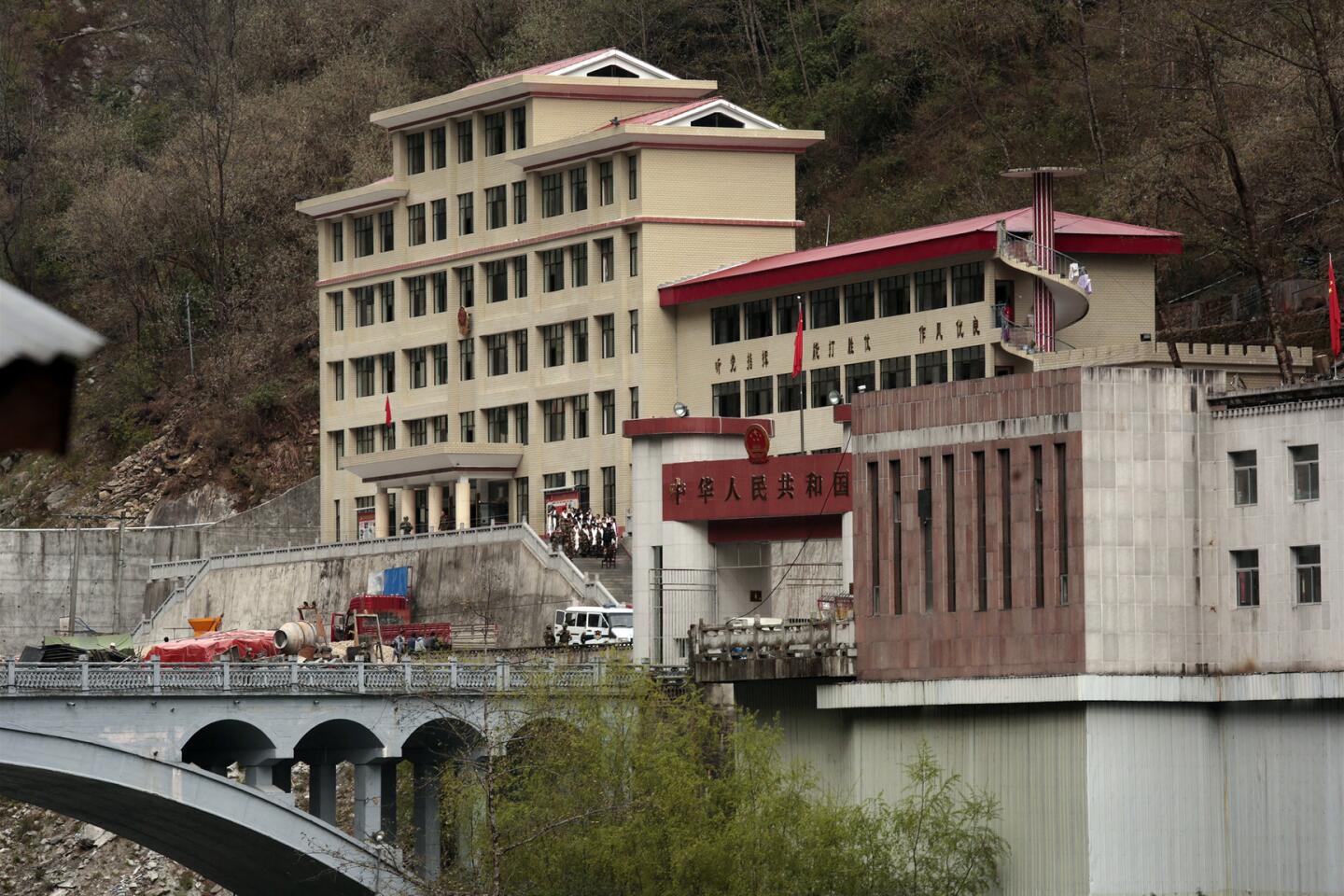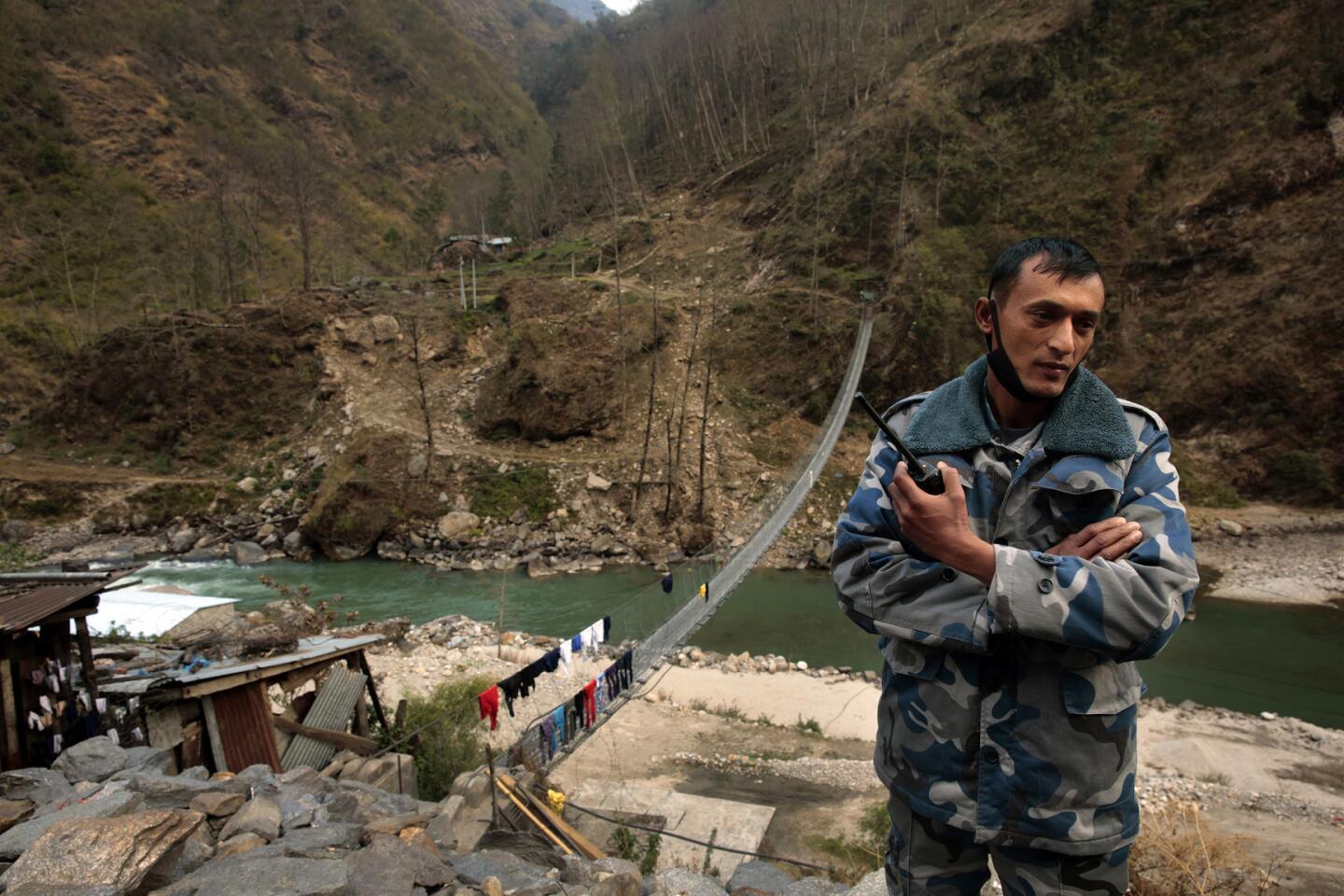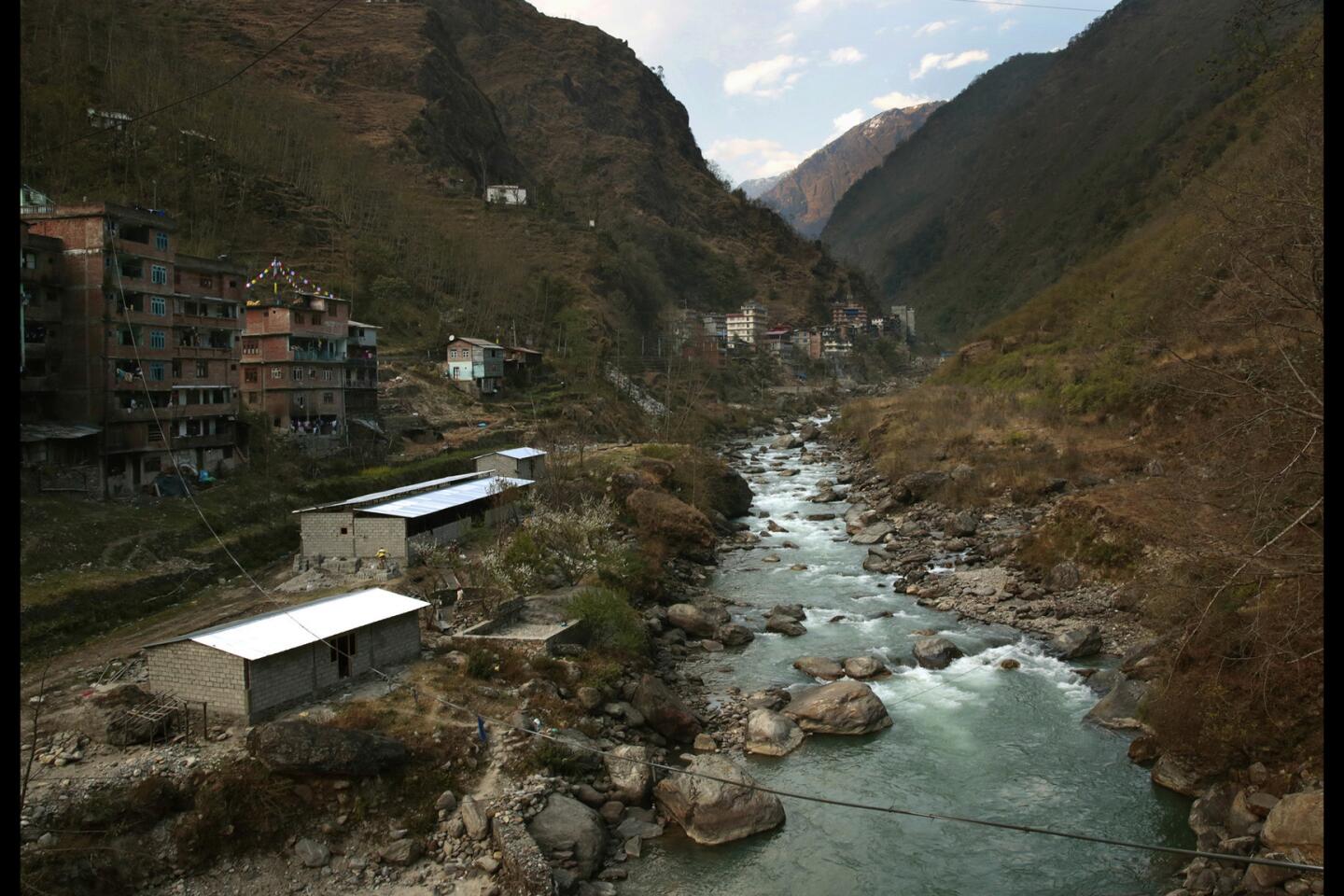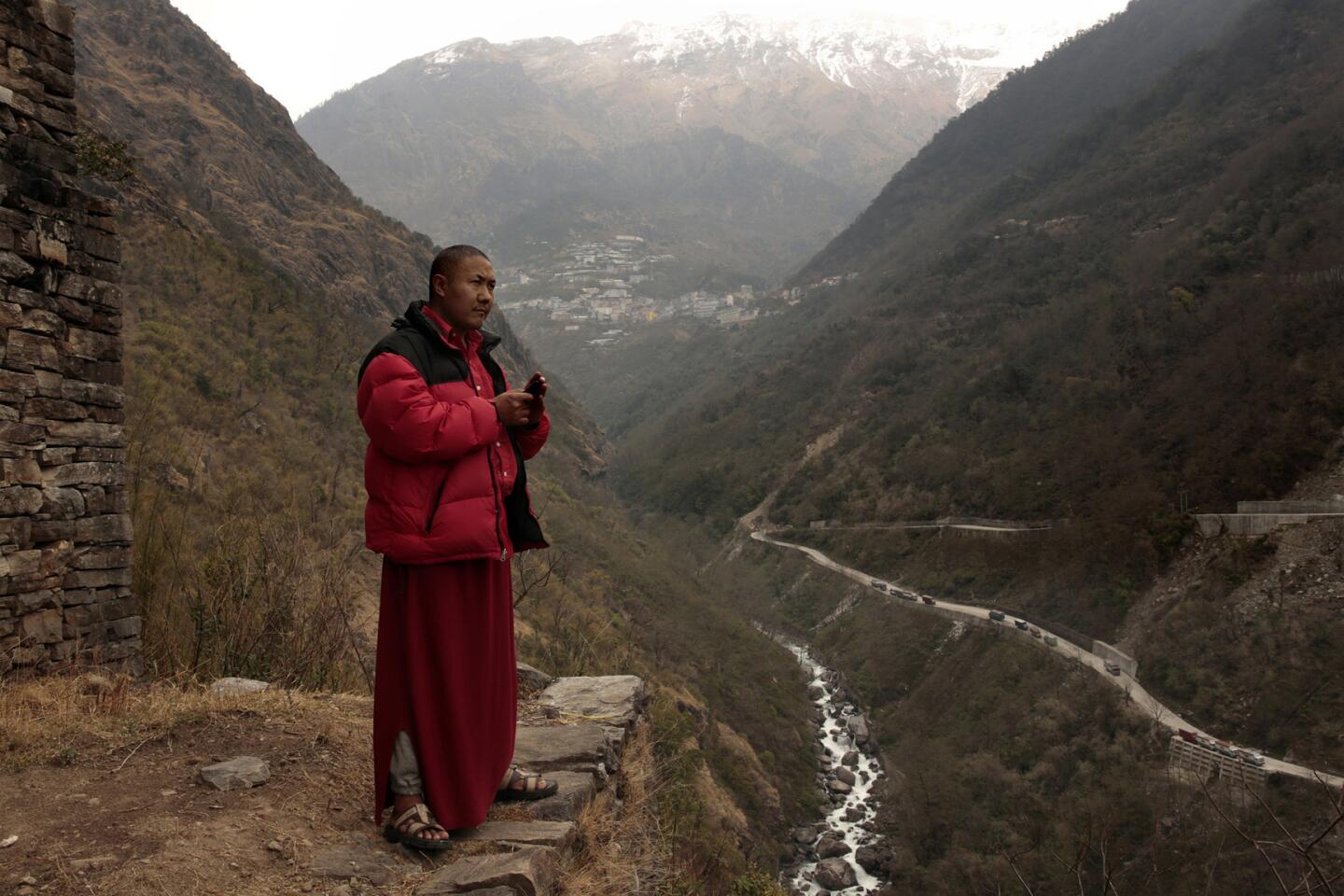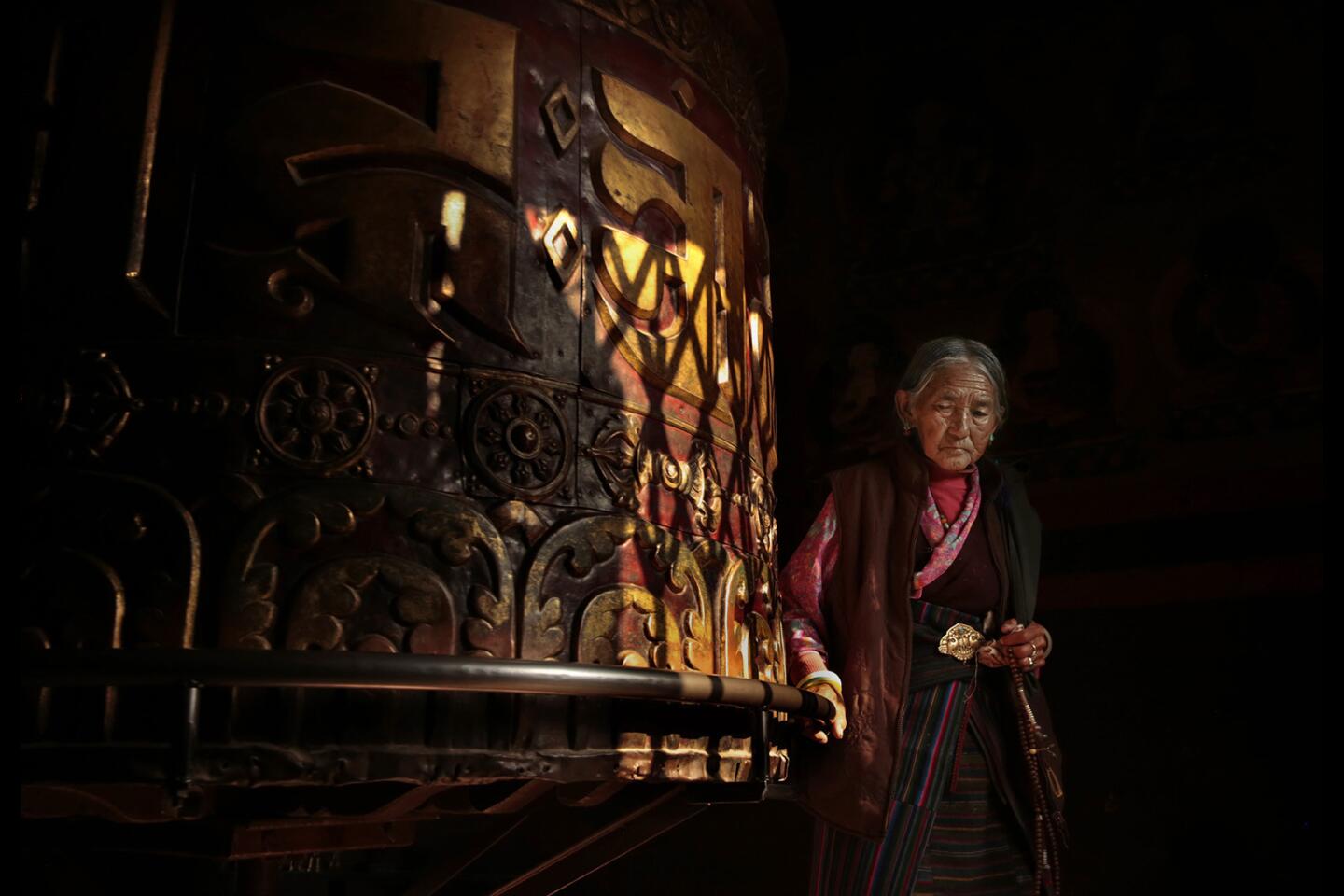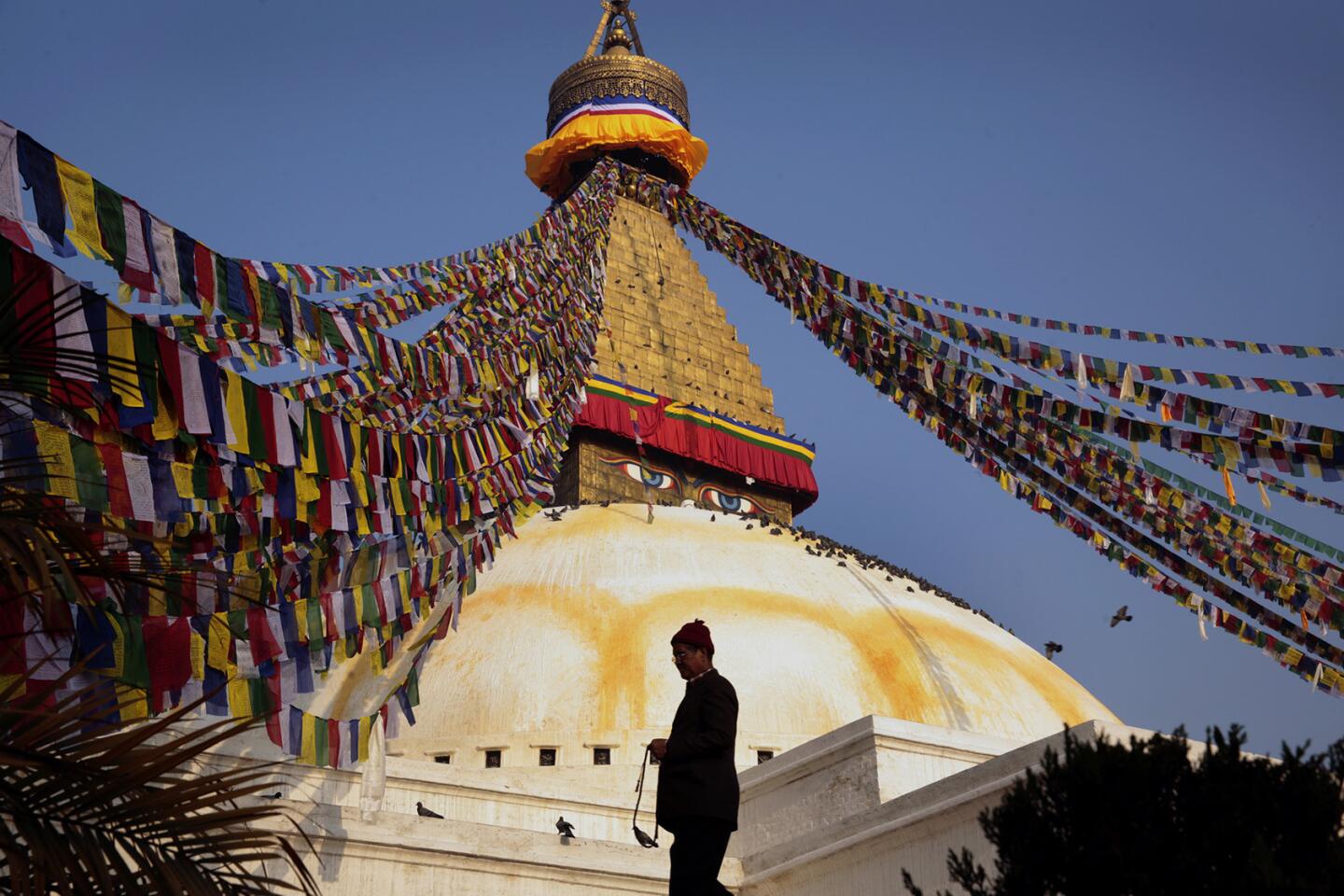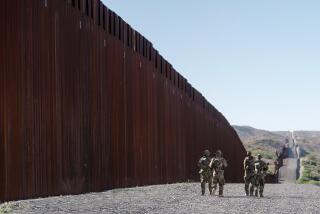Tibet’s Road Ahead: Tibetans lose a haven in Nepal under Chinese pressure
- Share via
Reporting from Kodari, Nepal — Tsomo escaped Tibet last year on a zipline that carried her into Nepal over a chasm of jagged rocks and a river gushing white as frothing milk.
The 23-year-old student remembers she was numb with terror as the smugglers fastened a thick rope through her legs and across her chest in a harness. It was the dead of night, but still she could hear the river roaring below her.
“It was like something out of a bad dream. I was so scared I peed in my pants,” said Tsomo, who is now a student majoring in English at a Tibetan school in India.
She was among the lucky few.
For decades, Nepal was the main station on an underground railroad for Tibetans fleeing China, which claims sovereignty over Tibet. After a long trek over the Himalayas, evading Chinese security, refugees would seek asylum in Nepal or move onward to India, where the Dalai Lama, their spiritual leader, lives in exile.
Now the doors are slamming shut, as Nepal falls under the sway of China’s power and money.

On the cusp of the Dalai Lama’s 80th birthday, many Tibetans wonder whether their struggle for autonomy and religious freedom will soon be lost. Desperation can be seen in the number of self-immolations that have occurred since the religious uprisin
Nepal is a case study in how a rising China has come to exert itself over its neighbors. Landlocked and impoverished, with a chaotic political system and recovering from natural disaster, Nepal has capitulated easily to Beijing’s will — and nowhere has that been more strongly expressed than in the fate of would-be immigrants from Tibet.
From 1991 to 2008, an average of 2,200 Tibetans came across annually, according to the U.N. High Commissioner for Refugees. Only 171 made it in 2013, and fewer last year.
SIGN UP for the free Great Reads newsletter >>
One reason is that a booming Chinese economy has persuaded many Tibetans to remain at home. Some are even returning to Tibet after years of exile. But the dwindling number of Tibetan immigrants to Nepal also suggests strongly that the once-welcoming Nepalese government has been pressured by China to shut the door.
“Nepal has a weak government and the Chinese are able to exploit that,” said Yubaraj Ghimere, a Nepali political commentator and columnist.
Responding to demands from China, the Nepalese have installed heightened security on the border. A phalanx of undercover police and informants now makes it almost impossible for Tibetans to cross into Nepal, except by extraordinary means such as the zipline.
Tibetans already in Nepal — many of them born here — are facing new restrictions on getting refugee certificates, jobs, drivers licenses and even exit visas to leave the country.
Beijing quadrupled its foreign direct investment in Nepal to $128 million in 2015, up from $24 million in 2014. China rushed in with a 62-person rescue team after the April 25 earthquake, supplying tents, food and search and rescue teams.
Low-interest Chinese loans are funding much of Nepal’s new infrastructure: hydropower plants, a ring road around Katmandu, the capital, and an airport in the second-largest city, Pothara. Schools have China-donated computers; hospitals, Chinese X-ray machines.
A Chinese-led nongovernmental agency wants to build a $3-billion tourism and pilgrimage project in Lumbini, believed to be the birthplace of Siddhartha Gautama, the historical Buddha.
There are Chinese secret police crawling all over here. They aren’t supposed to be; this is the land of Nepal, but they wander around and do whatever they like.
— Shunu, a Tibetan monk
Not even the world’s highest mountain is an impediment: China recently proposed burrowing under Mt. Everest for a railroad tunnel connecting China to Nepal.
Lobsang Sangay, the prime minister of the Tibetan government in exile, says China is in effect buying Nepal.
“All this financial aid to Nepal is because of Tibet,’’ he said in an interview in the exile government’s headquarters in Dharamsala, India.
The extent to which the long arm of China is reaching across borders is evident in the Nepalese town of Kodari, about 50 miles west of Mt. Everest. It has become a popular hangout for hippies and hikers, as well as the main customs entrance to Nepal for truckers bringing China-made jeans, rice cookers, telephones and sneakers across what is called the Friendship Bridge.
The smell of spicy Sichuan cooking wafts from a construction site where a crew — all of them, including the cook, imported straight from China — works on a road project.
Chinese police officers patrol the dusty main street lined with tea shops, and though they don’t wear uniforms, they speak so loudly in Chinese that it is clear they don’t need to disguise their presence.
“There are Chinese secret police crawling all over here. They aren’t supposed to be; this is the land of Nepal, but they wander around and do whatever they like,” said Shunu, a Tibetan monk at Liping Monastery, perched high on a windy bluff over the customs checkpoint.
Monks pointed out the many closed-circuit cameras attached to trees and rocks along the banks of the Sun Kosi River, which forms the border.
“When I came out, there were no cameras, no checkpoints, no police,” said another monk, Jangpo, who crossed from Tibet as a teenager in the mid-90s to study Buddhism.
In response to restrictions by the Nepalese government, the monastery has adopted stricter rules for the monks, Jangpo said. The monks may not publicly criticize China. They may not participate in Tibetan independence activities. They also are forbidden to display large portraits of the Dalai Lama or celebrate his birthday in public.
In front of the monastery, a large portrait of the Dalai Lama was taken down a few years ago, replaced by a wallet-sized black-and-white photograph tucked discreetly between butter lamps.
“That is all we have. We are not supposed to do anything to provoke the Chinese,’’ Jangpo said.
During the Tibetan New Year, the Tibetans used to swarm to Boudhanath, a Katmandu suburb that is the center of the community, gathering around the stupa, a religious tower draped in prayer flags, and carrying large photos of the Dalai Lama. Those ceremonies have been moved to Tibetan schools, out of public view.
Nepalese authorities have banned the traditional commemoration ceremonies held each March by Tibetans to mark the anniversary of the failed 1959 uprising in Lhasa that led to the flight of the Dalai Lama.
Nepal’s foreign minister, Mahendra Bahadur Pandey, promised in March during a visit to Beijing that Nepal “will never allow any forces to use Nepali territory to engage in anti-China activity.”
The Chinese did once have reason to be wary of Tibetan activity in Nepal. During the 1960s, the CIA secretly trained Tibetan refugees in Nepal to wage guerrilla war against China. Funding for the covert operation was cut off after President Nixon’s visit to China in 1972.
“It feels now like China is so powerful it is unbeatable,” said Phenpo Gyaltsen, 80, who in his youth was a guerrilla fighting the Chinese. Gyaltsen went on to run a carpet factory, one of many Tibetan-operated businesses that have helped the Nepalese economy.
“We Tibetans used to enjoy total freedom in Nepal, but every year the restrictions get more and more. The Nepalese government has to show the Chinese they are being tough on Tibetans,” the former guerrilla said in a living room where a photograph of the Dalai Lama with President George W. Bush is displayed.
It is natural for China to help out its poorer neighbors as it tries to expand trade routes westward in what President Xi Jinping has advertised as the “new Silk Road.” But it isn’t all about economics. In a report last year, Human Rights Watch said China has made Nepal its complicit “partner in restricting Tibetans’ basic rights.”
Most of the Tibetans entering Nepal in recent years have been young people who want to study abroad, mostly in India. But China makes it almost impossible for them to get a passport and cross legally.
“Getting a passport is harder for a Tibetan than getting into heaven,” a Tibetan blogger was quoted as telling Human Rights Watch in a report in July on China’s refusal to grant minorities such travel documents.
The land borders between China and India are highly militarized, making Nepal the favored and most direct route for Tibetans to cross, typically by the sort of zipline that Tsomo took.
Tsomo’s father had decided to send her to India to study in 2011 after her Tibetan-language high school was closed by authorities.
With a passport out of the question, her family decided she would travel to the Nepalese border and pay a smuggler to bring her across. It took three years just to get the permits to travel to the border area.
“We needed recommendations from an army official, a village official, a town and county official. We had to bribe so many people by buying them meals,” said Tsomo, a delicate-featured young woman in a flowered sundress.
The family paid $6,000 for the last part of the journey, which took Tsomo to the border town of Zhangmu, directly across from Kodari, and then across the river by zipline.
Pema Tamang, 62, a farmer in Kodari whose fields overlook the bridge and customs checkpoint, said the stream of Tibetans who used to make their way across the border has shrunk to practically nothing.
But the Nepalese farmer was full of praise for neighboring China.
“China has improved the economy. We have paved roads now all the way to the border. Rice cookers, telephones, DVDs,” Tamang said. “We feel sympathy for the Tibetans, but the Chinese are rich.”
More to Read
Sign up for Essential California
The most important California stories and recommendations in your inbox every morning.
You may occasionally receive promotional content from the Los Angeles Times.

